In this part of Michigan, the indigenous Odawa (or Ottawa) and the French fur traders have conspired to turn the spelling of words and the pronunciation of those words into concepts that are loosely related, at best. Trust me when I say that everything is pronounced “MACK-in-awe” and that it’s easier to just say “Mac.” I’m not the first person to recognize that shortening the name is for the best; the Odawa name for this area was the even trickier “Michilimackinac” or Big Turtle.
The Mighty Mac
Crossing from Michigan’s Upper Peninsula to its Lower Peninsula involves traveling across a notable landmark: the Mackinac Bridge. The engineering marvel crosses Mackinac Straits for a distance of 5 miles, making it the longest suspension bridge in the Western Hemisphere, and at 3,800 feet the central span between the towers is the 3rd longest span in the U.S. There are several parks on both the north and south sides of the straits that are perfect for viewing the bridge, and the “Mighty Mac” is also an iconic sight while traveling by ferry to Mackinaw Island.

While local residents and entrepreneurs had dreams of a bridge starting in the 19th century, especially after the opening of the Brooklyn Bridge in 1883, the Mighty Mac did not come to fruition until the 1950s. The long process resulted from some unique engineering challenges. The bridge spans would need to withstand high winds, while the piers in the water had to survive crushing pressure from winter ice floes.
One day during our stay I bribed Ken to go with me to the Mighty Mac Bridge Museum, a very small free museum set up by a local ironworker who worked on the construction of the bridge before starting a pizza parlor. The bribe? Pizza from the place downstairs from the museum, of course. This little home-made museum has artifacts donated from many workers involved with bridge construction, ranging from tools used on the project to a suit used by the divers working on the underwater piers to hundreds of union dues stamp books. The many framed newspaper articles about the progress on the bridge offered an interesting glimpse of the importance of the project for both the local economy and local pride. And everywhere we went, this iconic landmark managed to pop up in the background.
Mackinac Island
Mackinaw City, the southern landing point for the Mighty Mac, is a very touristy town that is notable mainly for serving as the gateway to Mackinac Island. Similar to places like Newport, RI and Palm Beach, FL, the nice scenery and weather of Mackinac Island attracted the rich and famous of the late 19th and early 20th centuries. The scenery was so nice, in fact, that most of the land on the island — owned by the federal government since being relinquished by the British at the conclusion of the War of 1812 — was designated as America’s second national park in 1875. When the island’s military installation was decommissioned in 1895, the federal land was transferred to the State of Michigan and became Michigan’s first state park, occupying 80% of the island.
Similar to the approach used by Henry Flagler’s FEC railroad in Florida, two steamship and railroad companies partnered to build the gigantic Grand Hotel in 1887 to facilitate tourism. Meanwhile, the wealthiest visitors built lavish “cottages” along the bluffs that were only used seasonally but left a lasting architectural legacy. What makes this island unique is how little it has changed since its Victorian era heyday. Motor vehicles have been banned (with some exceptions) since 1898 so getting around by foot, bicycle, and horse-drawn carriage is the norm. All visible buildings, old and new, conform to a historic aesthetic. The entire island was designated as a National Historic Landmark in 1960.
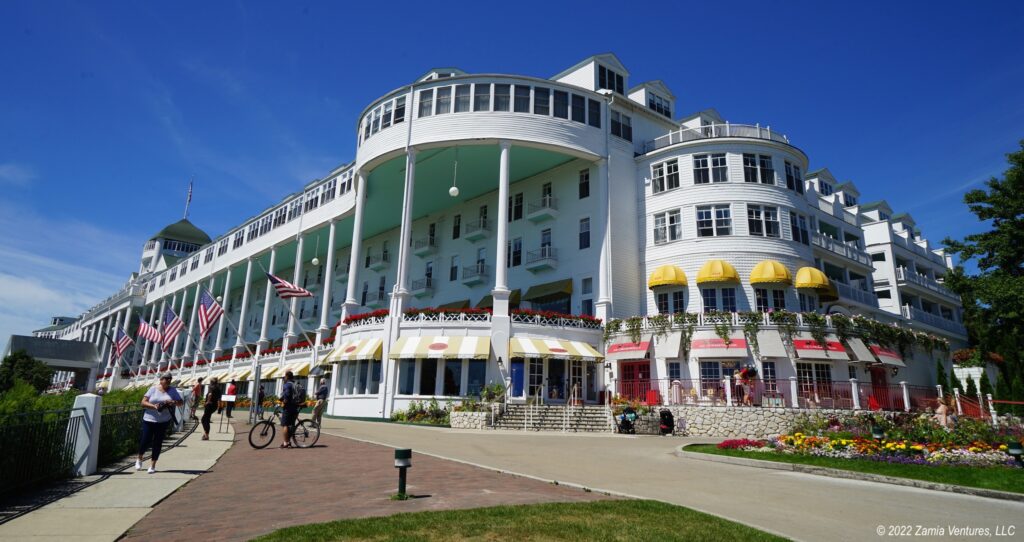
We took the ferry over one sunny day and explored about 5 miles on foot, including a trek out to Arch Rock in the state park, some mileage on the Manitou Trail, and wandering by the reconstructed Fort Mackinac, the Grand Hotel, its golf course, and several residential neighborhoods. This island sits in Lake Huron, and just like the other Great Lakes the water takes on marvelous tropical hues in the summer sunshine. The views from the state park were lovely, and once we got off the paved road and onto a normal trail the traffic dropped off considerably.
Though the state park was nice, our favorite part of our island visit was seeing so many well-preserved historic structures in one place. The commercial buildings, churches, and residences all displayed unique architecture and color schemes, and every single one was complemented by colorful flowers in beds, along walkways, and in window boxes. The cottages on the bluffs also had commanding views over the harbor and commercial area, with distant views of lighthouses, the mainland, and nearby islands.
The consistency of appearance is fairly easy to explain. We’ve owned homes in planned communities in Florida where all the homes look very similar, and we understand the concept of governing documents that require uniformity. Here on Mackinaw Island, the requirements for historic style are enshrined in the city’s zoning ordinance that dictates everything from the type of windows (single- and double-hung are OK, while casements, picture windows and sliding glass doors are not) to the materials to be used on the foundation, siding, and roof. This is similar to the famously strict guidelines that apply in Santa Fe’s historic district to maintain the adobe-based look and feel. Like in Santa Fe, the overall effect is appealing.
On the other hand, our least favorite part of the island was the absolutely jam-packed commercial area around the ferry docks, where there are no less than 12 — twelve! — fudge shops within four blocks. And let’s not forget about the haunted house attraction, T-shirt shops, and outrageously priced restaurants that are vying for space with the places renting bicycles and the places offering horse-drawn taxis, carriage rides, and island tours. Too lazy to walk 1 mile to see Arch Rock? Ride a horse-drawn tram. Literally everything is a sales opportunity; the visitor center charges $2 for a map of the island that is mostly ads for the businesses.
Mackinac Island is total catnip for people who particularly enjoy the “Main Street USA” portion of the Magic Kingdom at Disney. A few of the obvious similarities to Disney:
- acres of parking lots to navigate on the mainland (for ferry service)
- impossibly cute and consistent architecture
- relentless retail in the commercial district
- costumed employees looking like refugees from the cast of The Music Man
- endless crowds in the commercial district, on the main roads, and at the main points of interest
But unlike Disney, where everything is perfect, this island is full of horse poop. Very full. It’s a genuine hazard for pedestrians and cyclists. And also unlike Disney, where the people in 19th century costumes are clearly putting on an act for the benefit of the visitors, on Mackinac Island the workers really have to do their jobs without the benefit of modern mechanical devices. Hotels have bicycling bellhops that transport guests’ bags to and from the ferry. Trash is collected via horse-drawn drays. Landscape workers — and there are many of them keeping those gardens pristine — push lawn mowers along the streets to get to the properties needing care instead of using trucks with trailers. Similar to running a household in the Victorian era, this sort of lifestyle requires a permanent underclass of low-skilled workers who perform by hand the work that has been mechanized elsewhere in America. I am a fan of technology, innovation, and the productivity that comes from mechanization. Horse-drawn carriages are fun for little outings for the tourists, but why does the garbage collector have to use a horse?
I note that the island does allow motorized vehicles when they feel like it. Guests use golf carts with gas engines on the golf course. Guests are also free to ride around on scooters if disabled or otherwise mobility impaired. Gas powered lawn mowers are just fine. When doing really big projects, just pull the backhoe out from the maintenance area that’s behind the tall fence! (That fence is probably supposed to be closed when random tourists like us are snooping around.)
Days after our brief visit, and after seeing the large numbers of people that obviously flock to this area, I am still struggling to understand the appeal of an extended stay on Mackinac Island. I mean, there are many types of vacations that introduce guests to unfamiliar lifestyles — like spending a week on a dude ranch riding horses or working on an organic farm. But in these experience-based vacations the “unfamiliar lifestyle” might be new to a white collar office worker but it is one that some people experience everyday as part of their ongoing livelihood. Mackinac feels more like a very elaborate live action role play experience. Overall, while the island is certainly unique and beautiful, we found the idea of vacationing here for any period of time immensely weird, to say the least. It’s yet another unique and interesting thing we’ve encountered in our travels that I’m glad we experienced, but I doubt we will be returning to.
Around Mackinaw City
For the most part, the area of Mackinaw City clustered around the ferry docks features more of the same tourist trap material that fills the commercial district on the island: more haunted house attractions, more bizarre “museums,” more opportunities to parasail, and more fudge shops. But getting ourselves outside the downtown core yielded better results. There are multiple public parks dotted around this very northern tip of the Michigan mitten, offering different views of Lake Huron, Lake Michigan, and the Mighty Mac, and containing some interesting structures. We admired the historic lighthouses at Mackinac Point and McGulpin Point, two of the five 19th century lights that guided ships through the treacherous Mackinac Straits. The outbuilding at McGulpin Point had an interesting exhibit covering the Native American history of the area, their early contact with the French and the British, the role this area played in 18th and 19th century wars, and the early development of local fishing and tourism industries.
We also visited Headlands International Dark Sky Park, a county park a few miles west of town. Unfortunately there were no northern lights phenomena during our visit, and a full moon made for bright night skies, but this park’s lakefront viewing platform would have been the perfect place to take in astronomical events. Instead we made a daytime visit and hiked a loop trail where we enjoyed strolling through a forest full of sugar maples with a few lake views.
Besides the ferry, our only ticketed experience was a visit to the Icebreaker Mackinaw Maritime Museum to tour a renowned Great Lakes icebreaker vessel. The Great Lakes ice season is shorter than I expected, generally running from early January through mid-March, but losing out on shipping for a quarter of the year represents a major setback for the industries of the midwest. During World War II, the urgency of building planes, ships, and tanks meant that taconite (iron ore) needed to keep moving out of Duluth, Two Harbors, and other ports we have visited recently, so the federal government commissioned the Mackinaw to ensure continuous access to these ports. This Coast Guard ship was designed to be larger and more powerful than any other icebreaker on the lakes, and because its beam was wider than the St. Laurence Seaway (at the time) its only service area would be the Great Lakes. She performed admirably, serving for 62 years before being decommissioned. Like our visits to the aircraft carrier USS Lexington in Corpus Christi and the Lightship Columbia in Astoria, Oregon, being able to tour the ship and experience the narrow passageways and spartan quarters gave us a new appreciation for the dedication and sacrifice of the men and women who serve.
While the whole area has a very touristy ambiance — which we recognize well, being from Florida! — there are a few attractions that aim to do more than merely separate visitors from their money. In particular, the Mackinac State Historic Parks comprise several locations that seem to make a genuine effort to engage visitors with the history of the area through a living history experience. There are three different sites on Mackinac Island, the largest of which is Fort Mackinac. In the summer there are are reenactments of military drills, cannon exercises, and more. At other sites there are interpreters focused on the fur trade of the 17th and 18th centuries, and a blacksmith shop from the 1950s. On the mainland, Colonial Michilimackinac is situated right at the foot of the Mighty Mac and illustrates daily life in the region in 1779. This type of experience isn’t really our thing, but it could be fun and engaging for kids.
Where We Stayed
Once again we found ourselves at a private RV park, but once again it worked out well for us. Tee Pee Campground is located just south of Mackinaw City along the shore of Lake Huron. Our neighbors were closer and more numerous than we prefer, but having trees around us helped a lot. The campground sells discounted ferry tickets and is also on the route for the free shuttle bus to the ferry, saving us the hassle of finding parking in town. It is close to enough to walk or bike into town from the campground, and the views of Lake Huron, Mackinac Island, and the Mackinac Bridge from the lakefront beach were a nice treat.
Next: We return to Lake Michigan to visit Sleeping Bear Dunes National Lakeshore.
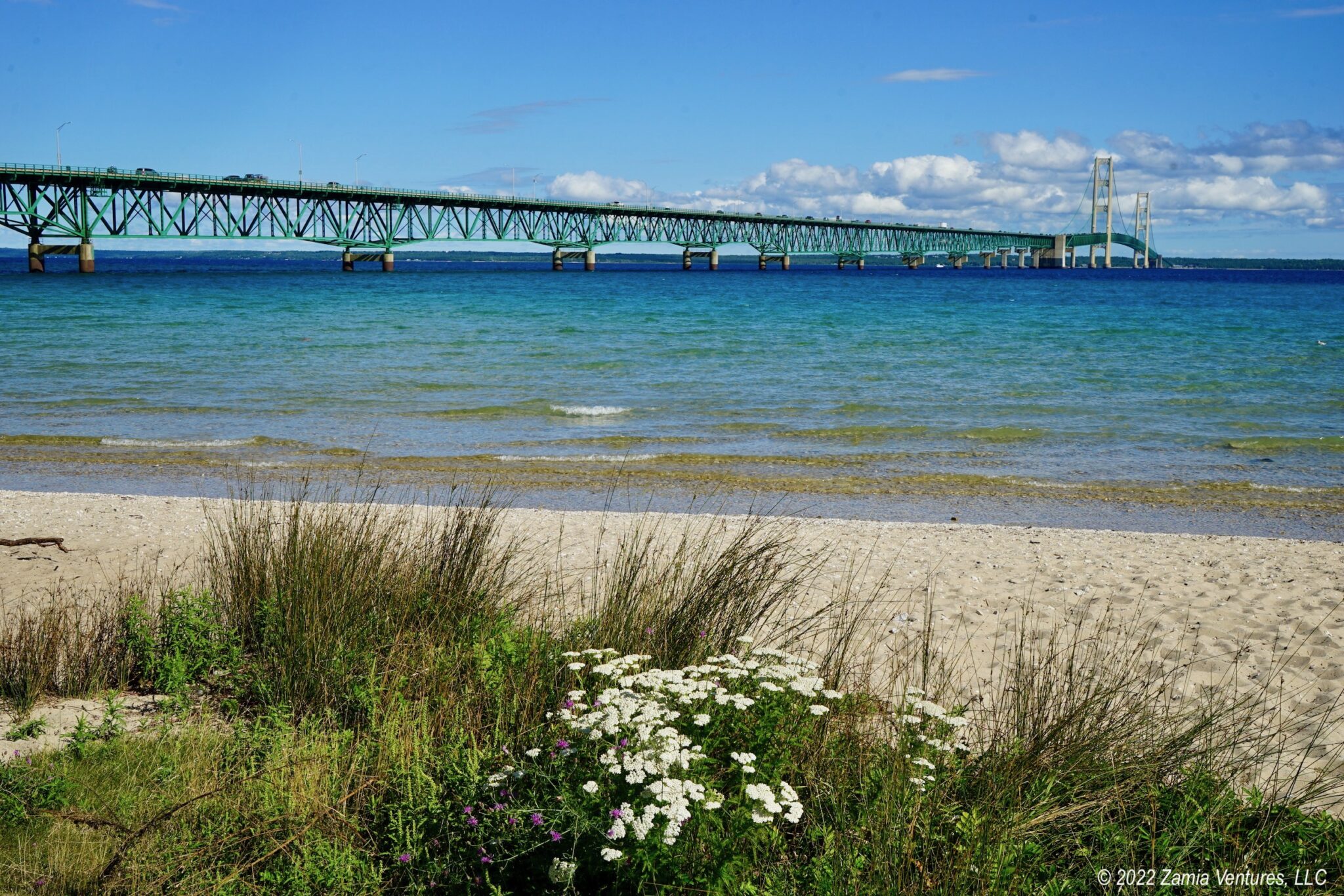
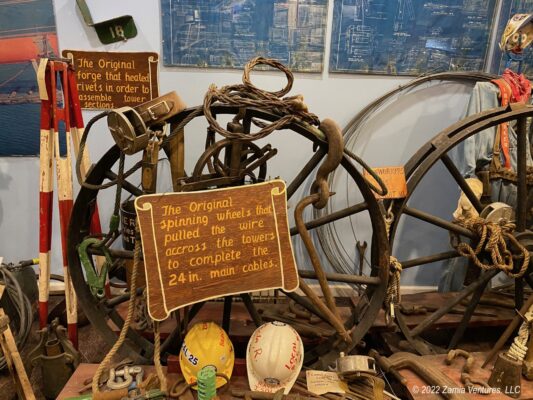
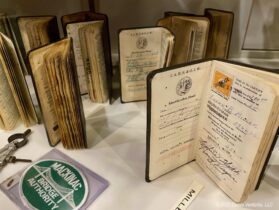
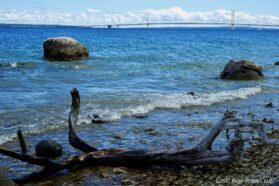
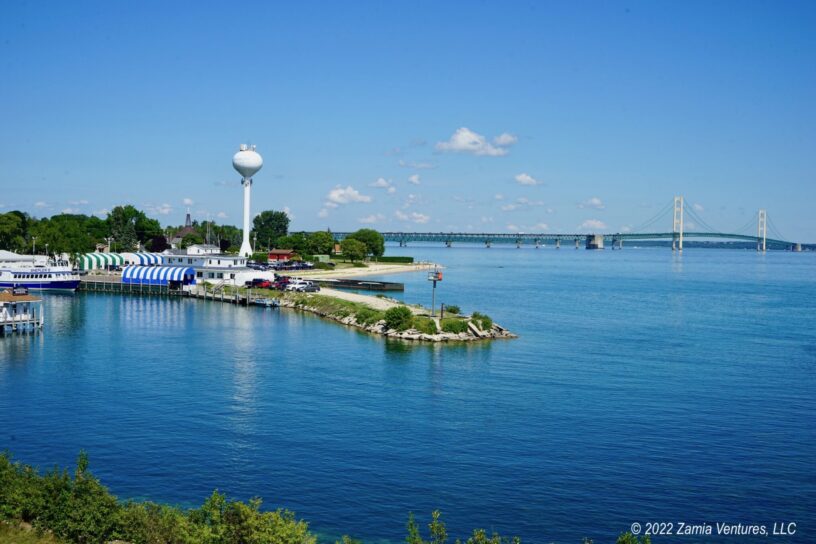
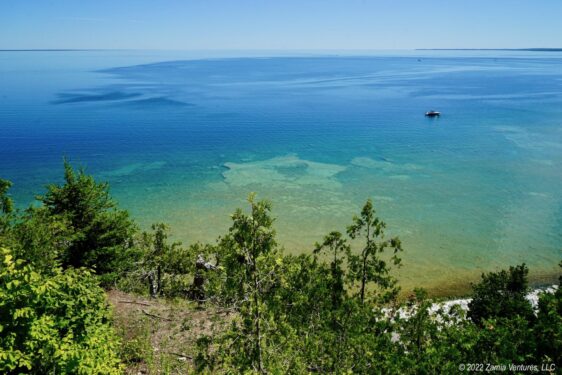
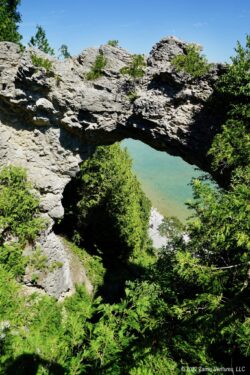
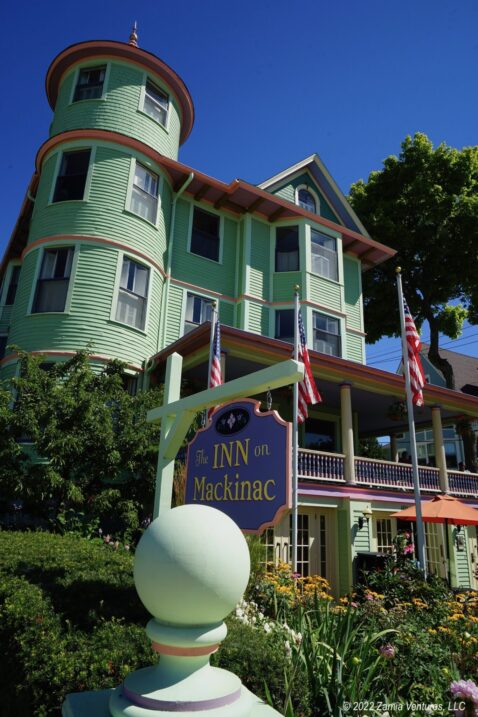

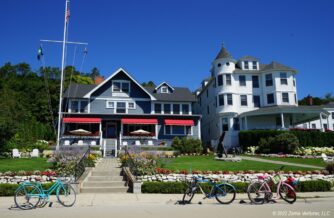


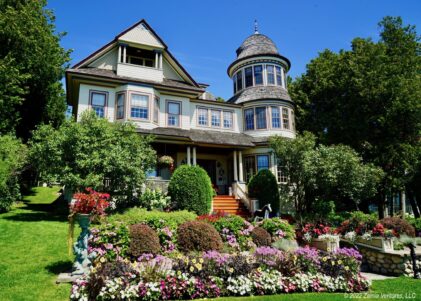

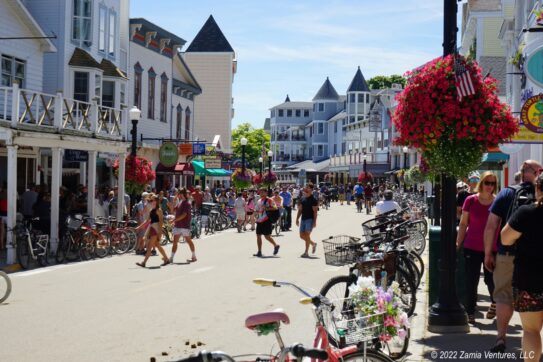
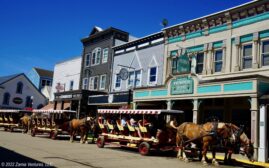
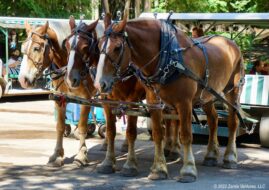
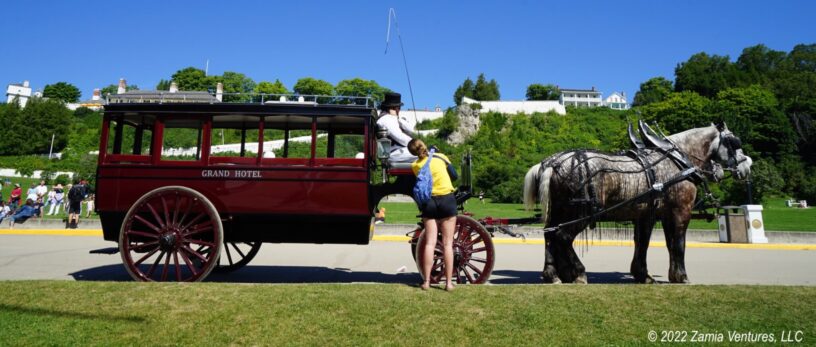
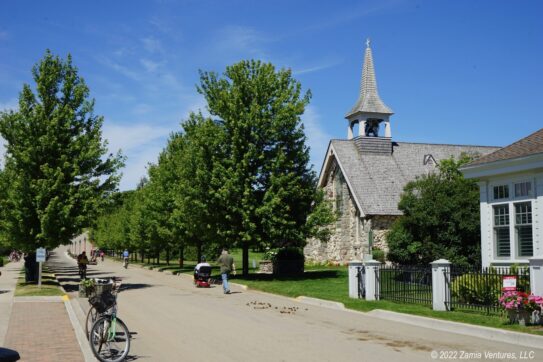
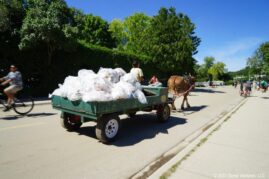
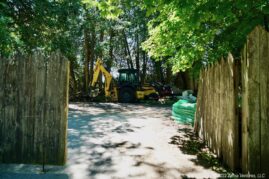
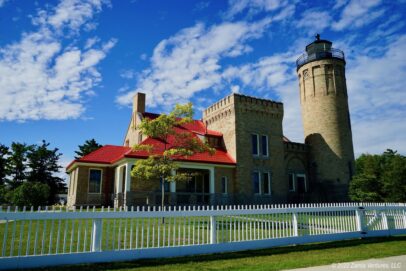
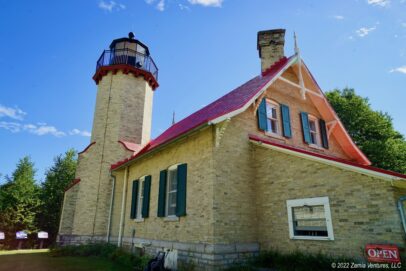
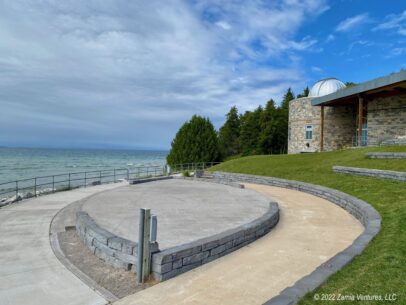
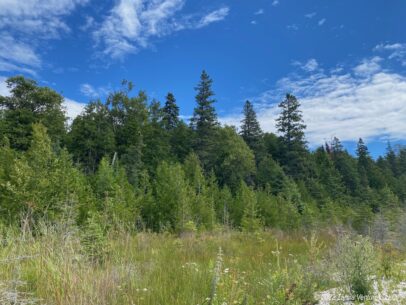
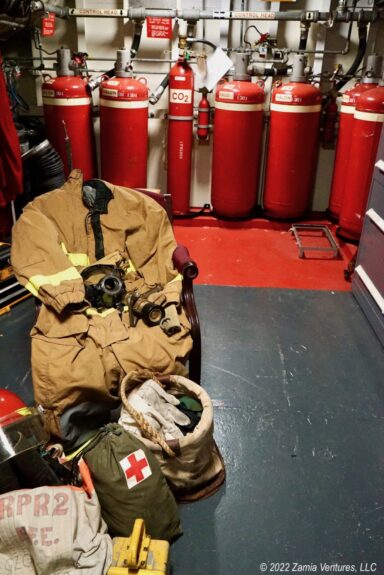
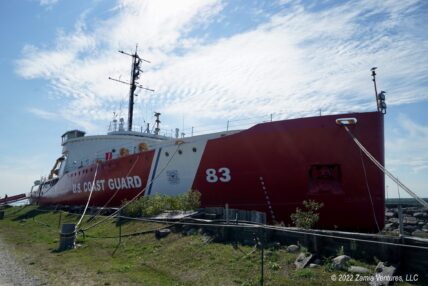

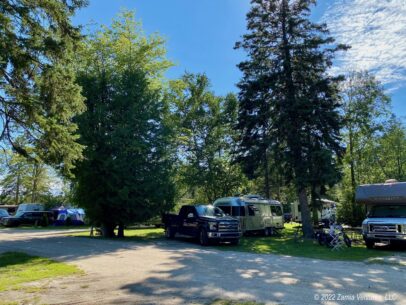
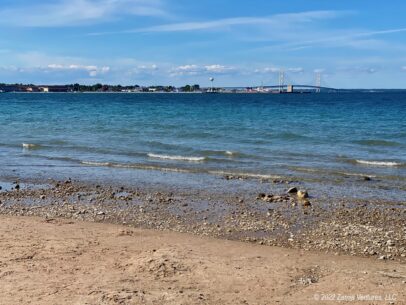
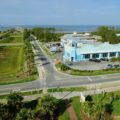
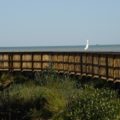
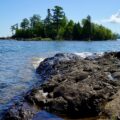

It’s so funny, we all hate touristy stuff, but we ended up loving Mackinac Island in spite of the touristy stuff and it really kinda ruined the experience for you. I think it probably was worse for you because you were there during true high season, whereas we were there in September. It was still busy, but not crazy busy.
Either way, though, you make an interesting point about how low wage unskilled workers are being forced to work harder just to keep up appearances. We thought it was cool because it was authentic, but you’re right – it’s kind of a dick move.
Hmmmmmmm. You’re making me rethink all of this!
Regardless, the fudge was legit and you really should have gotten some. Yes, I know, it’s touristy nonsense, but ya know what else it is? Delicious.
Now you’re gonna have to go back. 🙂
It’s possible that living in a very rural area has further reduced our tolerance for crowds below its original low level. Visiting at the very height of the busy season didn’t help. I’ll bet you didn’t have to stand in line for 15 minutes to get a peek at Arch Rock! But what really stuck in my craw, obviously, is the absurdity of the mandatory horse usage. Since we walked by the golf course, I read up on its composition and playing style. It’s an 18-hole course made up of two 9-hole courses on different parts of the island. So a golf game goes like this: 1) Walk from the hotel to clubhouse, where you pick up your golf cart. 2) Drive around course #1 on the gas-powered golf cart to play the first 9 holes. 3) Take a (complimentary) horse-drawn carriage ride for 1.5 miles to the start of the back 9. 4) Use another golf cart to zip around while completing your round. 5) Take a horse back to the hotel. 6) Overnight, golf maintenance workers will mow and groom the course with mowers and tractors, then return to their homes by bike. How does this make any sense???
The good news about the fudge is that we will have plenty more chances. The Murdick family has created a veritable fudge empire stretching across northern Michigan: https://www.murdicksmackinacfudge.com/about/ Obviously something so delicious can’t be kept confined to one tiny island!
As you know, we didn’t take in Mackinac Island (it would’ve been the wrong time of year anyhow) but we’ve enjoyed seeing it through the eyes of our fellow travelers. It does look kind of Disney-ish; I’d never thought of that before. You don’t have to go back for the fudge, though, because you can come here where there’s a drive-through fudge shoppe. DRIVE-THROUGH! I can’t speak to the tastiness of it yet, but again, it’s DRIVE-THROUGH FUDGE. Too bad you didn’t get any Northern Lights action; we got skunked on that all last summer, too. Now I have to go find a tracker for them and see if I might see them here as is occasionally (rarely) possible. Eatin’ some fudge and watchin’ the Northern Lights is my new long-range goal!
The Disney comparison is apt, but there are important differences. Disney would run the whole operation far better and it would make the 19th century seem even more wonderful, but at the same time Disney would completely disguise the drudgery involved in working without mechanical devices. So maybe it’s more realistic to see it the Mackinac Island way? Anyhow, I knew that seeing the Northern Lights on this trip would be a long shot and we haven’t exactly been planning around it. But now that you are settled into a home base you should definitely stay alert for chances to see them! And you must start sampling the fudge NOW to ensure you are prepared with the right flavors when the time comes. It sounds like the most convenient fudge ever, so why wait?
“But unlike Disney, where everything is perfect, this island is full of horse poop.” Hahahaha!!!! I loved this post! Everything you wrote confirms what I suspected about Mackinac Island…but we will visit anyway. It’s just one of those things we want to experience for ourselves, but I suspect we are going to feel exactly the same way that you do about the island. We’re planning to take our bikes, and I’m hoping the horse poop land mines won’t cause us any problems.
I’m glad to hear that the lighthouses and the dark sky park are worth visiting, because those are on our itinerary. I still have hope that we might see the northern lights while we’re up here! P.S. How was the pizza downstairs from the Mighty Mac Museum? That is such a random and fun find.
Your timing should help you – I can’t imagine the place could get any busier than it was during our visit, and the horse pooper-scoopers (that is, sadly, a job that exists on the island) just couldn’t keep up. And the further you get away from the ferry dock the quieter it gets. Bikes are a great idea, and the shuttle buses have ramps to load bikes so you don’t even need to ride into town.
The county parks are nice although very quick to visit. Although we didn’t make it there, you might want to check out Wilderness State Park. The pizza place underneath the museum was OK. We are always up for pizza, the flavors were good, but the crust was soggier than we normally prefer. But we chalk some of that up to regional differences. And they do have gluten free crust if you are interested!